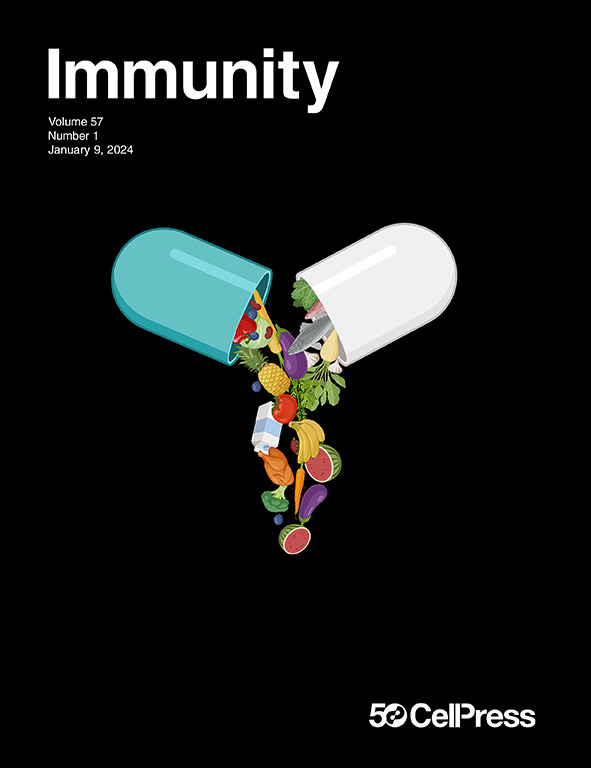巨噬细胞的颗粒摄取触发了不同的转录途径,不同地调节炎症和溶酶体基因表达
IF 25.5
1区 医学
Q1 IMMUNOLOGY
引用次数: 0
摘要
接触颗粒是几种炎症性疾病的驱动因素。在这里,我们研究了巨噬细胞对尿酸钠晶体、焦磷酸钙晶体、铝盐和二氧化硅纳米颗粒的反应。虽然每个颗粒诱导了不同的基因表达模式,但我们发现了一个共同的炎症特征和溶酶体酸化基因的急性激活。使用尿酸钠晶体作为模型,我们证明了这种溶酶体基因程序受5 ' -引物amp激活的蛋白激酶(AMPK)依赖的转录网络调控,包括TFEB, TFE3和表观遗传调节剂DNA甲基转移酶3a (DNMT3A)和DOT1L。这种溶酶体酸化程序与jnk - ap -1依赖性网络并行运行,但在很大程度上独立于驱动晶体诱导的趋化因子和细胞因子表达。这些发现揭示了控制炎症和溶酶体反应的途径的分支,为治疗颗粒相关疾病提供了见解。本文章由计算机程序翻译,如有差异,请以英文原文为准。

Particle uptake by macrophages triggers bifurcated transcriptional pathways that differentially regulate inflammation and lysosomal gene expression
Exposure to particles is a driver of several inflammatory diseases. Here, we investigated macrophage responses to monosodium urate crystals, calcium pyrophosphate crystals, aluminum salts, and silica nanoparticles. While each particle induced a distinct gene expression pattern, we identified a common inflammatory signature and acute activation of lysosomal acidification genes. Using monosodium urate crystals as a model, we demonstrated that this lysosomal gene program is regulated by a 5′-prime-AMP-activated protein kinase (AMPK)-dependent transcriptional network, including TFEB, TFE3, and the epigenetic regulators DNA methyl transferase 3a (DNMT3A) and DOT1L. This lysosomal acidification program operates in parallel with, but largely independently of, a JNK-AP-1-dependent network driving crystal-induced chemokine and cytokine expression. These findings reveal a bifurcation in pathways governing inflammatory and lysosomal responses, offering insights for treating particle-associated diseases.
求助全文
通过发布文献求助,成功后即可免费获取论文全文。
去求助
来源期刊

Immunity
医学-免疫学
CiteScore
49.40
自引率
2.20%
发文量
205
审稿时长
6 months
期刊介绍:
Immunity is a publication that focuses on publishing significant advancements in research related to immunology. We encourage the submission of studies that offer groundbreaking immunological discoveries, whether at the molecular, cellular, or whole organism level. Topics of interest encompass a wide range, such as cancer, infectious diseases, neuroimmunology, autoimmune diseases, allergies, mucosal immunity, metabolic diseases, and homeostasis.
 求助内容:
求助内容: 应助结果提醒方式:
应助结果提醒方式:


